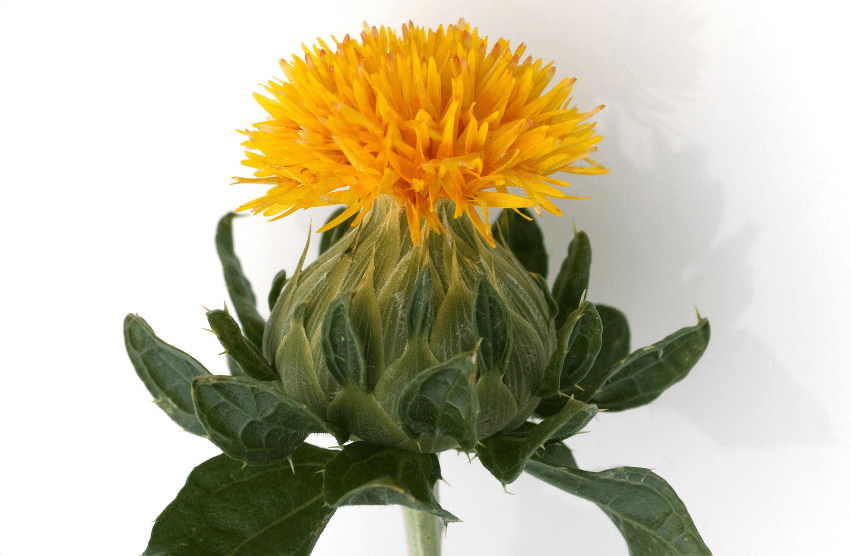
Carthamus
Share

Common Name Dyer's Saffron,False Saffron,Safflower
Family Name Asteraceae
Parts Used Flowers,Seeds
Herbal Actions Circulatory Stimulant, Antioxidant, Analgesic, Anti-inflammatory, Emmenagogue
Health Benefits Heart Health, Skin Nourishment, Blood Circulation Enhancement
What are the Benefits of Carthamus?
Bright, vibrant yellow-orange Carthamus flowers, known as safflower, have been cultivated for millennia across Asia and in Traditional Chinese Medicine (TCM) as a revitalizing tonic for the heart, blood circulation, and skin.* Energetically, this herb is considered to be a yang enhancer that’s slightly bitter in taste and warming in application. It’s a crucial herb in TCM, frequently used to promote healing, reduce inflammation, and improve skin health. Containing linoleic acids, vitamin E, and other phytonutrients, Carthamus is also a powerful antioxidant that helps to bolster overall health by strengthening the body’s natural defenses.* Often hailed as a beneficial oilseed, safflower oil is rich in unsaturated fats and compounds like serine and threonine that contribute to its therapeutic properties. This explains its widespread use beyond medicinal applications, being incorporated into daily dietary practices, cosmetic products, and nutritional supplements, enhancing both culinary flavors and health benefits.
Historical Use of Carthamus
Carthamus, commonly known as safflower, has held a significant place in various cultures, particularly in ancient Egyptian and Asian societies. Historical texts and artifacts suggest that the vibrant safflower was not only cherished for its beauty but also revered for its medicinal and symbolic values. In Ancient Egypt, safflower was used for its oil and as a coloring agent in cosmetics, particularly in the making of rouge and other makeup products. According to ancient manuscripts, it was believed to embody the vitality and strength of life, often used in ceremonial practices to promote health and protection.
In Asia, particularly in Traditional Chinese Medicine (TCM), safflower has been documented in texts such as the "Compendium of Materia Medica" by Li Shizhen as a critical herb for invigorating blood, reducing pain, and soothing menstrual discomfort. Its flowers and oil were commonly integrated into daily life, used both in healing poultices and as culinary ingredients to enhance food with its health-promoting properties. This historical usage underscores Carthamus's role not only in physical wellness but also in cultural rituals, echoing its importance in holistic healing and traditional ceremonies.
Botanical Description & Habitat
Carthamus tinctorius, commonly known as safflower, is an annual, thistle-like plant from the Asteraceae family. It typically reaches heights of 30 to 150 centimeters (12 to 59 inches). The plant has a deep taproot which allows it to thrive in arid climates. The leaves are long, narrow, and spiny, with a glossy green appearance and are arranged spirally on the stems.
The most distinctive feature of safflower is its flowers, which are usually bright yellow, orange, or red. These flowers appear in a dense globular inflorescence at the top of the plant and bloom from July to September. Each flower head contains 15 to 20 seeds, which are the primary source of safflower oil.
Safflower is native to the arid environments of the Middle East and the Indian subcontinent but has been widely cultivated in other parts of the world, including North America and Europe. It prefers sunny environments and is tolerant of dry, arid climates, making it suitable for cultivation in regions that are unsuitable for other crops.
The plant thrives in well-drained soils and does not require fertile soil, though it benefits from light soil that allows its taproot to penetrate deeply. Safflower's drought-resistant qualities have made it an important crop in areas with low water availability, yet it can also be found in a variety of other settings as an ornamental plant due to its striking and colorful flowers.
